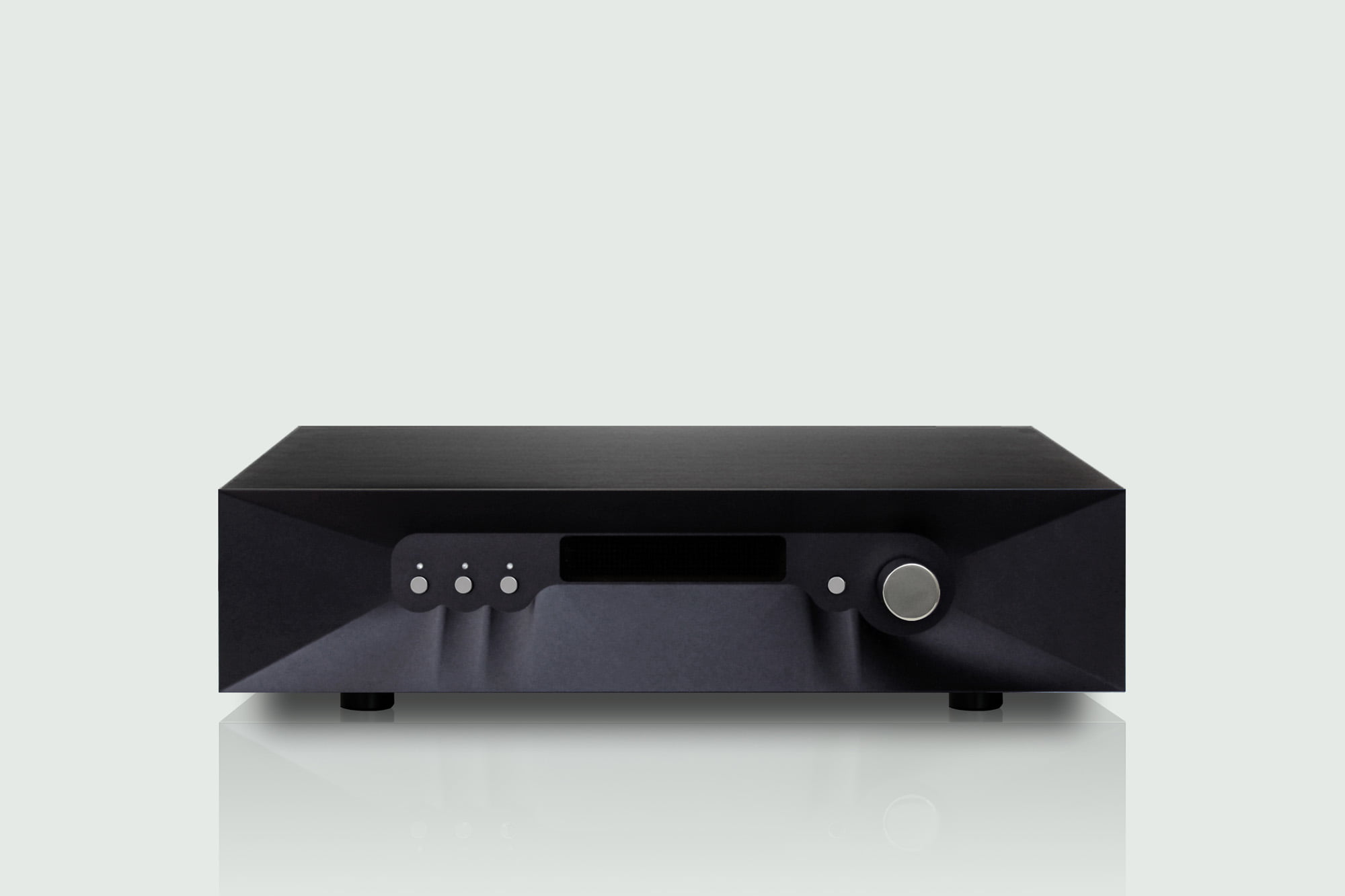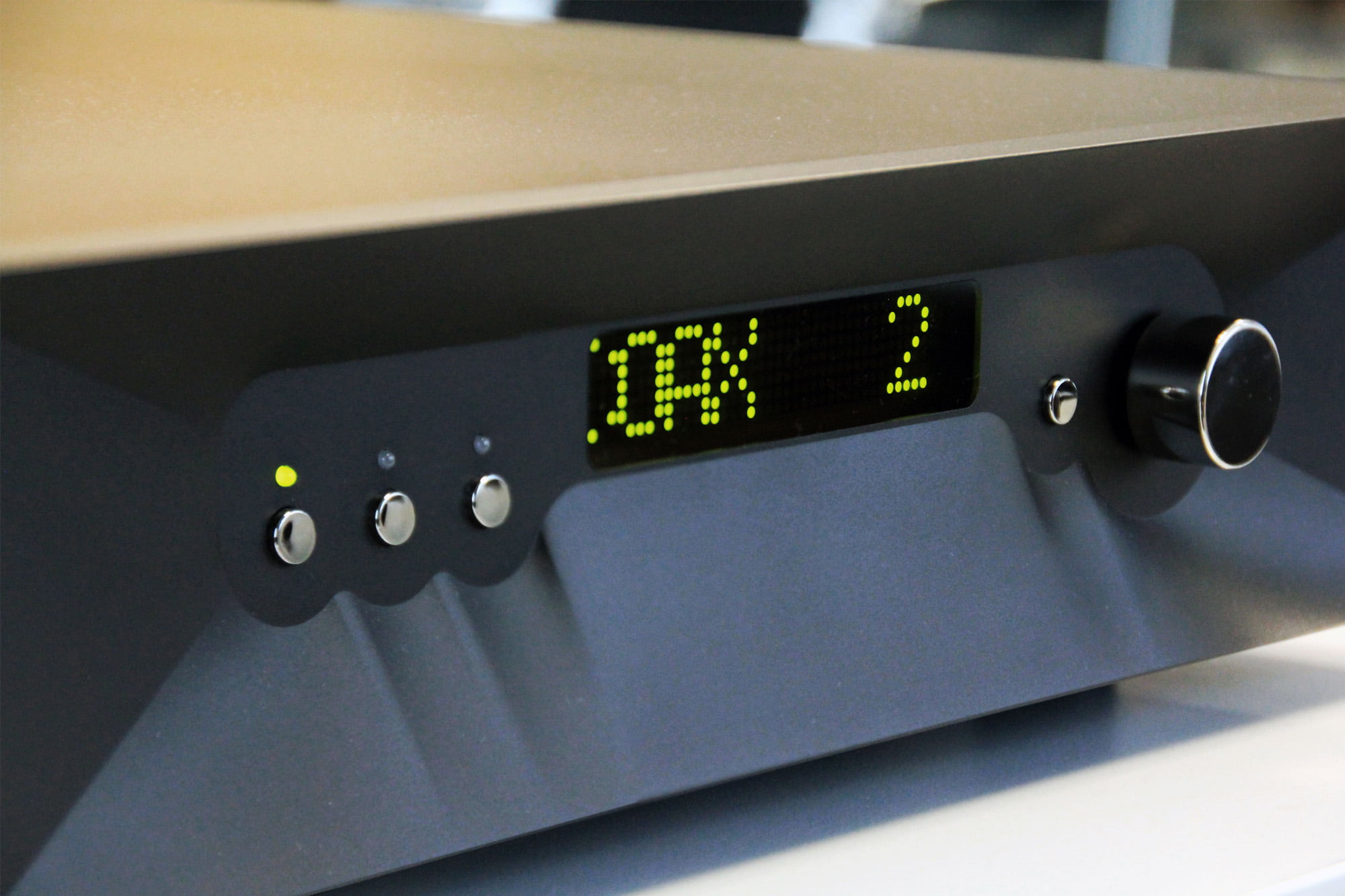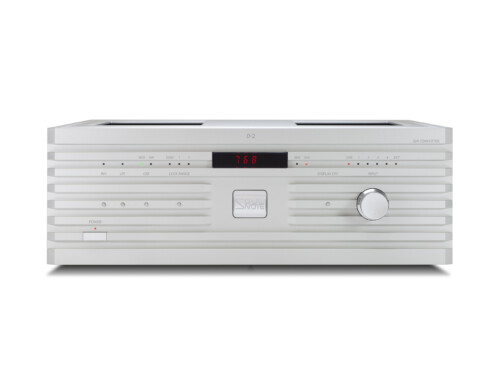Maximinus uses a concept called R2R ladder. This is a resistor matrix that is switched for the various output levels delivering a fraction of an internal reference (much like a volume control). In order to bring the performance of multibit DACs to new levels a very fast and sophisticated switching logic controlling them had to be implemented. The in-house developed 1ppm precision conversion module takes advantage of the available resolution and bandwidth to present you the naked truth. (Not always a pretty picture) The result is analog tone and transparency surpassing the legendary NOS Philips or Burr Brown and modern incarnations, not to mention any of the delta-sigma converters who’s tone we all became used to. Digital filtering doesn’t like asymmetric signal, but most music is a pulsed signal, so the “digital sound” can be switched off on the Maximinus leaving the DAC artefacts to be dealt with via the natural characteristics of our silver line level output transformer.
Our suite of algorithms would apply digital filtering and upsampling to the incoming data stream for example incoming 16bit 44.1kHz CD data will by converted to 32bit 352.8kHZ data fed directly to the DAC. This greatly improves low-level resolution and the sense of space by averaging the DAC error over 8 cycles. (much like 8 dacs in parallel) The process is completely user controllable and can be bypassed for purist and non-oversampling use. Our dac module operates fully differential at 40Vp-p output to guarantee the highest signal to noise ratio. We have no reconstruction filter at the DAC output. The output transformer provides the cleanest possible output signal with ZERO feedback. while scaling the output to the accepted industry levels further reducing the Dac noise. We also use transformer or optical decoupling of all inputs, meaning that contaminated ground connection and other interfering signals form data sources don’t make it to the inside of the unit.
Clock phase noise is as important to for the sound as is dac linearity. This prompted the use of ultra low phase noise clock generators that feed dedicated re-clock logic making sure all conversion and data handling are done at the right moment. Multi-bit dacs are far less sensitive to clock jitter as the conversion is governed by the latch signal. The latch being much lower frequency than the data stream can be with lower near carrier phase noise. This reveals another lear of hidden data that dear I saw is better than any analog.
Each block in the DAC: the Converters, Clock, Input Processing and Control Logic have separate power supplies and our trademark constant current regulator technology for zero AC on the wiring. Then the whole assembly is nestled in a solid aluminum case for vibration damping and EMI/RFI screening following the same construction concept as our preamplifiers. It’s a different league from all currently available high end DACs hence the name of a huge Roman Emperor.












CONNECT WITH US